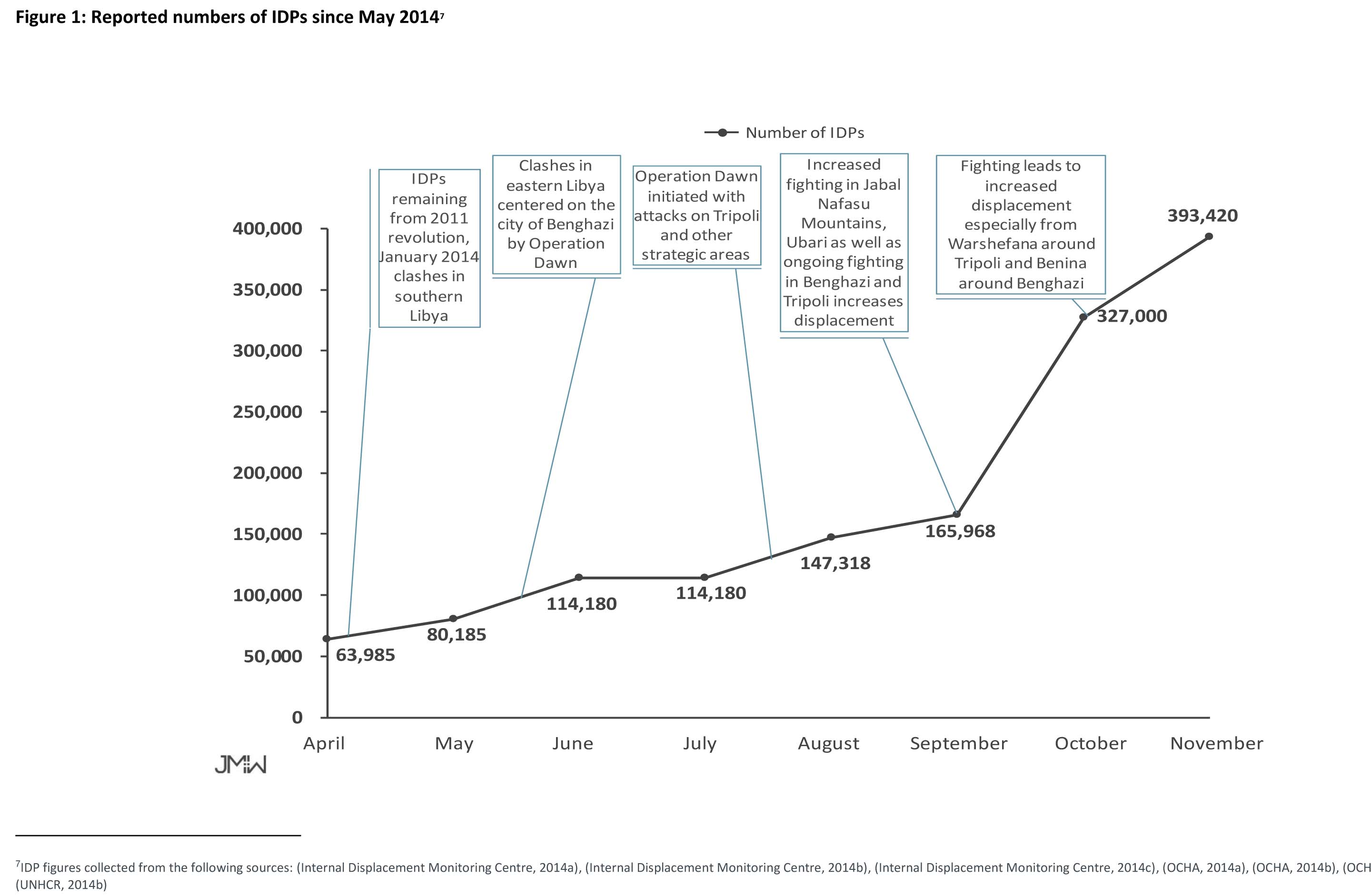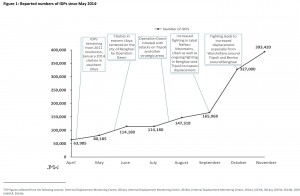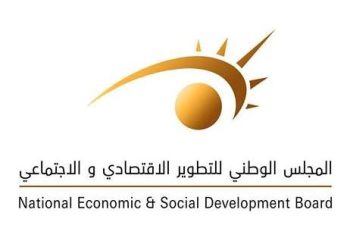By Libya Herald reporter.
Malta, 31 January 2015:
A new . . .[restrict]report out last week estimates that two million people, a third of the Libya population, may have been affected, and close to four-hundred thousand people are displaced – as a result of the country’s conflict.
The political crisis and escalation of violence in Libya since May 2014 has led to civilian casualties, massive displacement as well as the destruction of public infrastructure and the disruption of basic services and social protection systems, the multi international agency report entitled Interagency Rapid Assessment Report December 2014, concluded.
The interagency rapid assessment was carried out by IOM, UNHCR, UNICEF, UNSMIL and WFP from November to December 2014 in Libya in order to fill the critical information gap for the agencies to respond to the crisis, the report said.
The assessment covered a total of six locations across the country, focusing on the sectors of the population that had been directly affected by the conflict (IDPs, returnees), as well as vulnerable population (migrant workers, refugees/asylum seekers).
The crisis has had a significant impact on the lives and livelihoods among the affected population, it concluded. Out of the total Libyan population of 6.25 million, close to 400 thousand people have been displaced as of November 2014. While many were displaced from September to November due to the escalation of the conflict, some have returned to their place of origin, the report revealed.
The report said that Libya hosts refugees/asylum seekers mostly from sub-Saharan Africa and in addition from Syria lately. As of July 2014, 37,000 refugees and asylum seekers are registered with UNHCR Libya. IOM estimates that there are more than 200,000 migrant workers in Libya, mostly from Egypt and sub-Saharan Africa.
The population’s access to public health facilities is limited in some locations where insecurity is the issue. Lack of medical supply and/or the increased prices of medicine are cited among the major constraints.
Children’s access to school varies from one location to the other, with major challenge cited as school closure. School closure is reported mostly from the eastern part of Libya. Children of those households that have been displaced for a longer period of time tend to have a better access to schooling.
The food security situation among the IDPs/returnees is the concern, especially among those who have been displaced for a longer period of time. The population meets the current level of food consumption at the expense of future productivity or capacity to cope – many spend savings and/or reduce non-food expenses on health and education.
Fourteen percent of the assessed IDPs are classified as food insecure and in need of immediate food assistance, whereas eighty-four percent are vulnerable to food insecurity. If the crisis continues and the situation remains the same or deteriorates, many of the vulnerable population will become food insecure in the coming months, the report said.
Supports from the government, NGOs, and civil societies are not perceived to be sufficient, and many key informants question the sustainability of the current level of supports.
The assessment findings confirm that the current conflict has affected significantly the lives and livelihoods of the assessed population, including IDPs/returnees, as well as refugees/asylum seekers and migrant workers.
The assessment captured a snapshot of the humanitarian situation in the accessible locations among the affected area, while some locations were not accessible due to insecurity, and therefore the findings are not representative of all the affected areas.
The assessment captured the perspectives of the IDPs/returnees, refugees/asylum seekers and migrant workers on the humanitarian situation, but it did not look at broader issues including the impact of the crisis on the population at large, and the state of basic services compared to pre-crisis standards.
This calls for a need to conduct sector specific follow-up assessments in the future to inform appropriate responses, the report added.
In conclusion, the report made a series of urgent recommendations in the areas of food security, education, shelter and protection for IDPs/returnees, refugees/asylum seekers and migrant workers in Libya.
For the full report see: http://documents.wfp.org/stellent/groups/public/documents/ena/wfp271609.pdf
[/restrict]









